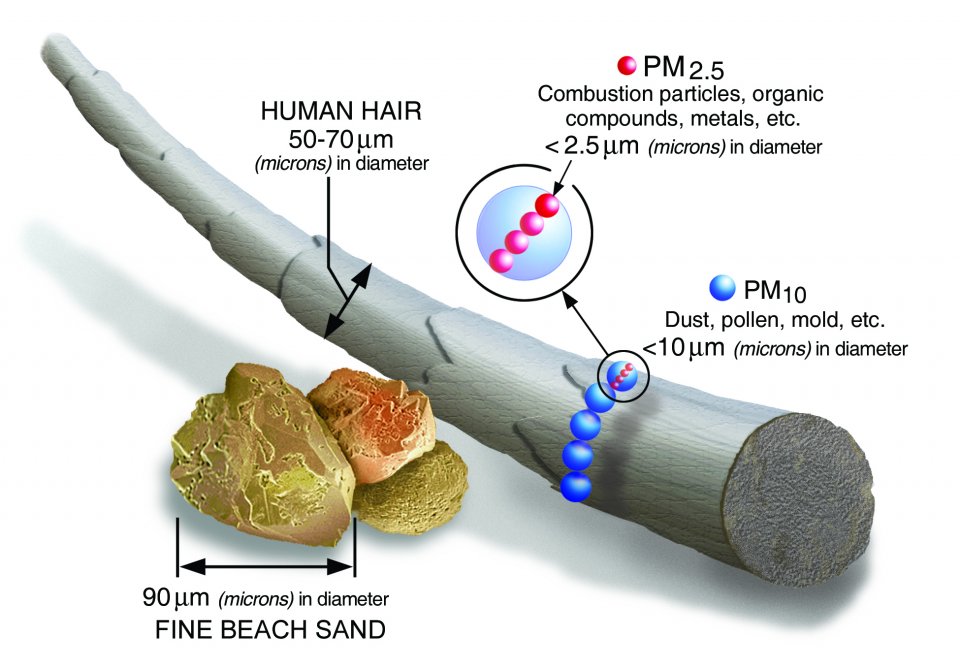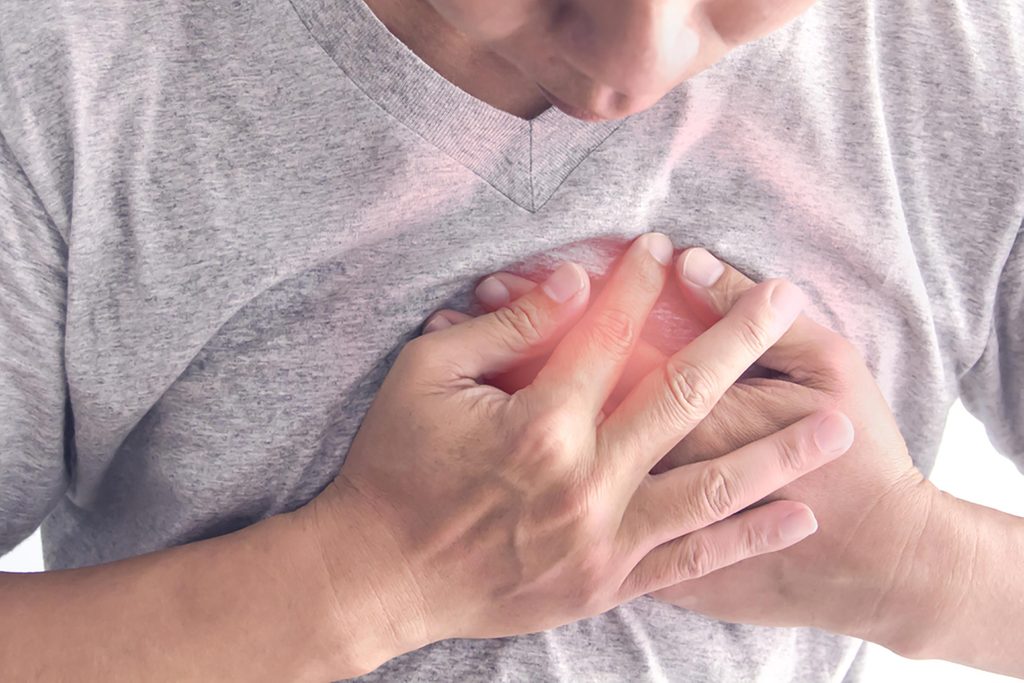Particle pollution — also called particulate matter (PM) — is made up of particles (tiny pieces) of solids or liquids that are in the air. These particles may include dust, dirt, soot, smoke, drops of liquid. Some particles are big enough (or appear dark enough) to see — for example, you can often see smoke in the air. Others are so small that you can’t see them in the air. Based on size, particulate matter is often divided into two main groups:
- The coarse fraction contains the larger particles with a size ranging from 2.5 to 10 µm (PM10 – PM2.5).
- The fine fraction contains the smaller ones with a size up to 2.5 µm (PM2.5). The particles in the fine fraction which are smaller than 0.1 µm are called ultrafine particles.

Where does particle pollution come from?
Particle pollution can come from two different kinds of sources — primary or secondary. Primary sources cause particle pollution on their own. These are called coarse particles. They are produced by the mechanical break-up of larger solid particles. The coarse fraction can include dust from roads, agricultural processes, uncovered soil or mining operations, as well as non-combustible materials released when burning fossil fuels. Pollen grains, mould spores, and plant and insect parts can also contribute to the coarse fraction. Finally, evaporation of sea spray can produce large particles near coasts.

Fine particles are largely formed from gases. Ultrafine particles (up to 0.1 µm) are formed by nucleation, which is the initial stage in which gas becomes a particle. These particles can grow up to a size of 1 µm either through condensation, when additional gas condensates on the particles, or through coagulation, when two or more particles combine to form a larger particle. Particles produced by the intermediate reactions of gases in the atmosphere are called secondary particles.
Combustion of fossil fuels such as coal, oil, and petrol can produce
- coarse particles from the release of non-combustible materials such as fly ash
- fine particles from the condensation of materials vaporized during combustion
- secondary particles through the atmospheric reactions of sulphur oxides and nitrogen oxides initially released as gases.
Smoke from fires and emissions (releases) from power plants, industrial facilities, and cars and trucks contain PM2.5
Particle Pollution and Your Health
Particle pollution can affect anyone, but it bothers some people more than others. People most likely to experience health effects caused by particle pollution include people with heart or lung diseases (for example, asthma), older adults, babies and children. If you have asthma, particle pollution can make your symptoms worse. If you have heart disease, breathing in particle pollution can cause serious problems like a heart attack. Particle pollution has also been linked to eye irritation, lung and throat irritation, trouble breathing, lung cancer, problems with babies at birth (for example, low birth weight).
The good news is there’s a lot you can do to protect yourself and people around you from the health effects caused by particle pollution. Start by learning about our PM Series. The Particulate Matter Sensors use optical sensors based on laser scattering principles and features innovative contamination resistance technology to perform highly accurate and reliable PM measurements. The replaceable sensor measures particles of PM1.0, PM2.5, PM4.0, or PM10, with a continuous operation lifetime of more than 8 years. The sensor will provide long-term reliability and high-resolution particle size binning for the detection of environmental dust and other particles. Visit our website for more information or contact one of our experts now!



